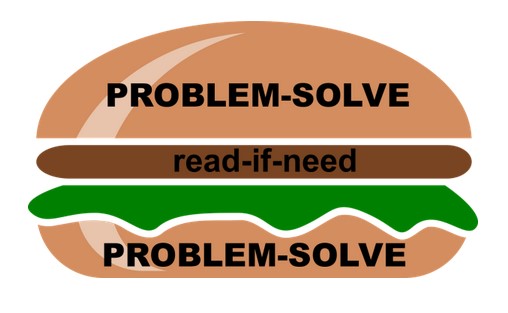When you go to do your homework (reading & problem-set)…
- Start with a homework problem first, not the reading.
- Read only if you need to. Read only what you need.
- Then get back to the problem and solve it.
WHAT IS THE PROBLEM-SOLVING SANDWICH?
Read-Then-Solve: A Bad Idea
Unfortunately, many students do their homework using the read-then-solve strategy—they read the entire assigned reading, then start on the problem set. This may make for reading more than you need and likely zoning out while you’re reading. Read-then-solve is often wasteful and boring. You may ask, “But don’t I need to understand the concepts first?” I ask in reply, “Do you read-then-solve in real life?”
The Problem-Solving Sandwich – What You Do in Real Life
In this “real world” scenario, suppose you are writing a report on a Word document, and run into trouble with the formatting. Say it is a problem with making bulleted lists in Word. You have a problem you intend to solve. Here are two strategies you can use. Which is best?
Strategy 1: Read-Then-Solve
- Read an entire chapter on formatting in Microsoft Word
- Attempt to solve the bulleting problem
Strategy 2: Use the Problem-Solving Sandwich
- Attempt to solve the problem with what you know. For example, you might right-click and see if any of the options make sense.
- If can’t figure it out, THEN search for a solution to your specific problem. For example, you might google “how to make bullets in word for mac 2011”
- As soon as you have what you think you need from whatever reading you find, get back to the Word doc and solve the problem.
It’s a sandwich—see?

Staff Writer: Nicholas Santascoy, Learning Instructor

